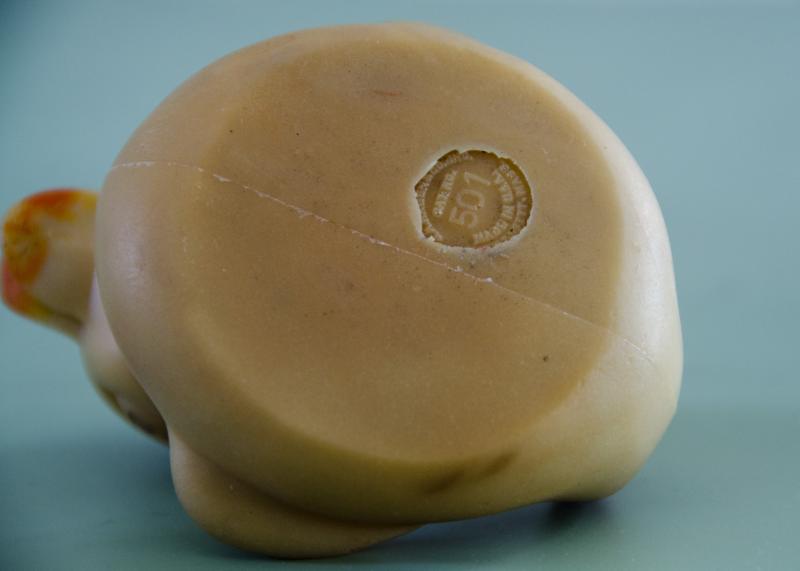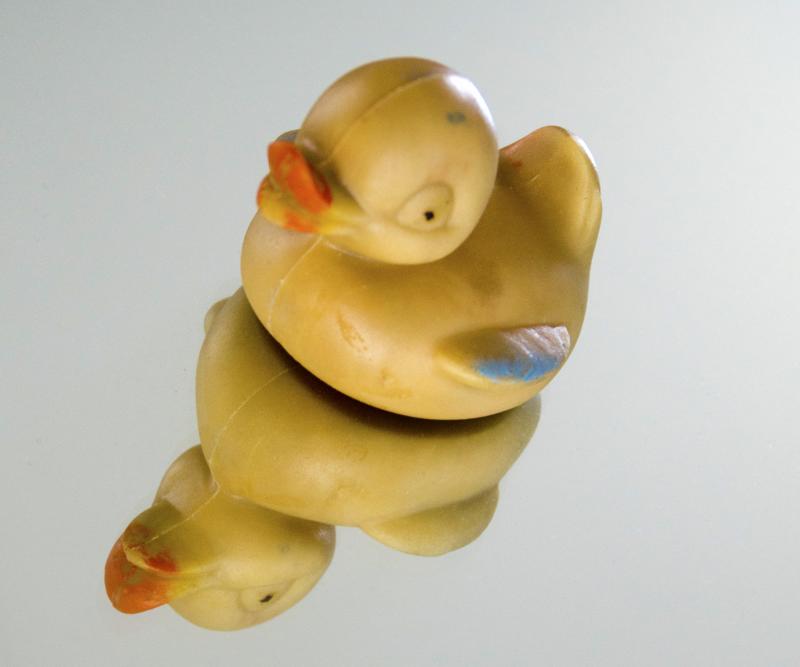Duck tales: Mattapoisett's forgotten toy factory
Specializing in those iconic yellow rubber ducks that have livened up many a bath time, the J.A. Hagen Toy Factory was the kind of place where everyone worked for at least a summer (or knew someone who did.) But, 60 years after it closed, no one really remembers much about the small factory behind the fire station.
“It was a very big thing and a lot of people worked there, but no one seems to know anything about it,” said Sue Hottel, co-owner of No Kidding toy store. “It vanished very fast and that was it.”
Owned by John and Dorothy Hagen and run with help from sons David and George, the factory employed a small crew, probably less than 20 at any given time. No one is sure when the factory at 34 Barstow St. opened, though town records show that the Hagens purchased the property on Feb. 1, 1954. An obituary for David Hagen, who passed away Aug. 1, 1988, suggests the factory was open for at least 10 years.
The 501 yellow duck was the factory’s most popular product, but former employees remember a number of other models. Mark Pelson, who worked there as a teenager, still has a whale from the factory. Bette-Jean Rocha said there were also mallard ducks and bunnies. Harry Downey remembers turtles and a lobster mold that gave the workers fits. Then there was “the Harvard Man.”
“He had a big burly fur coat, had a tennis racket in one hand and a jug of booze in the other,” said Downey.
The toy was made especially for Harvard University, which was also David's alma mater.
Aside from boxes to Harvard Square, where exactly the factory shipped the millions of toys it made is anyone’s guess. Those who worked in the molding department, however, remember one thing for sure.
“It was hot, over a hundred degrees,” said Richard Morgado. “We had to wear jeans, work shirts, rubber gloves up to here, a hat, yellow rubber boots that came up to here.”
The plastic for the toys was submerged into a tank filled with a solution heated to 480 degrees, said Scott Armbruster who worked in the molding department.
A minute later, the tank was opened, and he would be “engulfed in a cloud of steam.” The liquid plastic was then poured into a mold and put back in the tank, again for 45 seconds to a minute, removed and then plunged into a tank of cold water. Someone else on the shift would snap a metal whistle in place and send the toys to a room of six to eight women employed to spray paint details on the toys and dot the eyes.
“It was a long, hard day,” said Armbruster, who worked at the factory on and off for six years. “We were working in that tremendous heat and steam. In the summertime it was really bad. They had a Coke machine. I used to beat a path to that Coke machine. I probably drank a dozen bottles of Coke a day.”
Still, it was a decent job at a time when Armbruster said work was hard to find in the area. Armbruster remembers his starting pay at $1. He eventually worked up to $1.60 an hour.
“John was a good guy, but tough to get a raise out of,” he said. “I’d go to him, ask for a raise. He wouldn’t give it to me. I would quit. He’d call me up the next day.”
While Armbruster was year-round staff, the factory hired a number of high school and college-aged townies in the summer months.
Morgado worked the second shift from 2:30 in the afternoon to 11 at night.
“I think when I first started there they took a pool to see how long I’d last,” he said.
Morgado made it through the whole summer, but he and the other high school students were a restless bunch.
“We hated it so bad on the night shift … so we’d purposely break the equipment, jam the rotator. We knew we’d get at least a half hour before [David] could show up,” he said of the prank.
One night, rather than shirk their duties, the “hot shots” set out to beat the rubber duck production record.
“We worked our buns off one night. We produced more than the record and only five scrap,” Morgado said. “We heard it from the day shift, the regular workers.”
Morgado doesn’t remember how many they made, and the factory’s production numbers are another item on the list of unanswered questions for the defunct factory.
For the women on the other side of the building in the painting department, working at the factory was just ducky. Bette-Jean Rocha was one of six to eight women in the department.
“It was a fun job. It was a relaxing place,” she said.
Rocha, around 20 at the time, worked at the factory for less than a year when it closed.
“I was lucky to get a job close,” she said. “They wanted you to get your work out, yes, but the people were friendly. It wasn’t like a sweat shop in the city.”
The factory closed around 1964 and North American Business Forms Inc. purchased the property in 1965. The Hagens sold the factory to a company in Fall River or Providence, again no one is certain which.
“What killed them was China – that the toys could be made cheaper. They hung in there for a while but they couldn’t compete,” said Hottel.
In many ways, it’s not surprising that a few memories and even fewer ducks are all that remain of the factory. After it closed, many of the Hagens moved out of town. Around that time, David Hagen became temporary superintendent and later principal of Old Rochester Regional High School. While there are some photos of him in old newspapers, none have turned up so far of the factory as it was in the 1960s.
“There wasn’t like a big sign out there saying ‘toys.’ It was just a run of the mill building with no signs on it. A lot of people didn’t even know it existed,” said Downey.
But those who worked there, especially the men who spent a summer over melting plastic, will always remember the Hagen Toy Factory.
“It was an experience that I’ll never forget,” said Morgado.
Anyone with photos of the factory or other information may email georgia@sippicanweek.com.
Special thanks to Jodie Bauer for connecting the author with former employees.





2.jpg)











